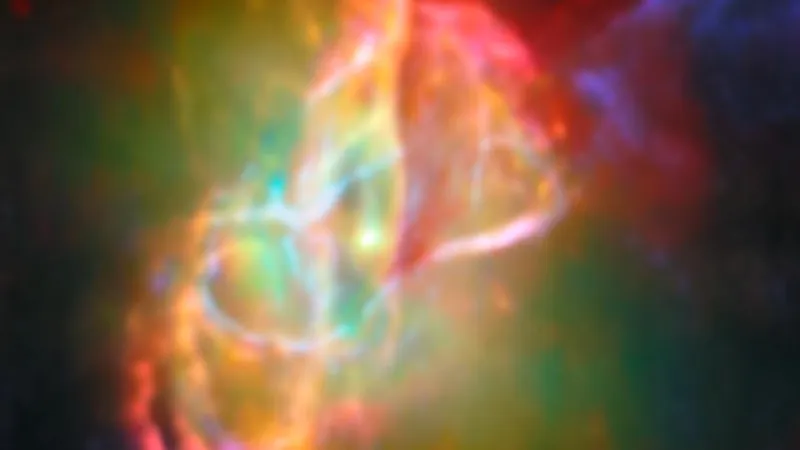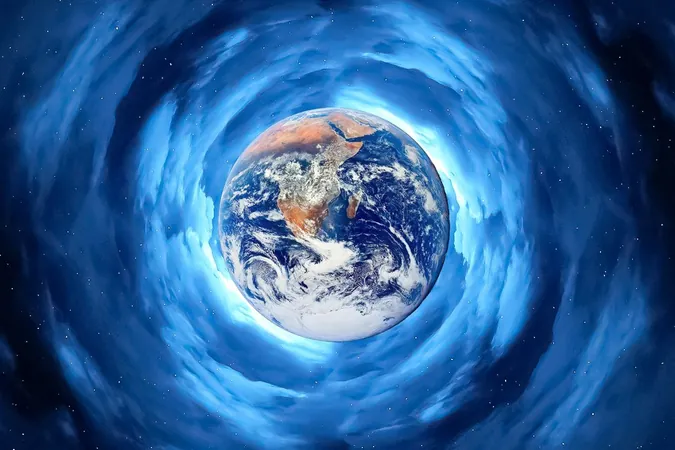
Unveiling the Cosmic Wonders of the 'Butterfly Star'
2025-08-29
Author: Jacques
Webb's Stunning New Image of Planet Formation
Prepare to be mesmerized! The James Webb Space Telescope has just unveiled a breathtaking view of IRAS 04302+2247, a fascinating planet-forming disk located a staggering 525 light-years away in the dense Taurus star-forming region. This extraordinary image allows scientists to dive deeper into the mysteries of dust grain properties and their growth within protoplanetary disks—key ingredients in the birth of new planets.
The Birthplace of Celestial Bodies
In the vast stellar nurseries across our galaxy, new stars are sprouting from enormous clouds of cold gas. As these young stars mature, they gather surrounding gas into narrow, dusty protoplanetary disks, setting the cosmic stage for planet formation. By studying distant disks like IRAS 04302, astronomers can glean insights into the early days of our own solar system, when the Sun and its planets began to take shape nearly 4.5 billion years ago.
Meet IRAS 04302: The Butterfly Star
IRAS 04302 is a captivating protostar still absorbing mass from its environment, with a protoplanetary disk that could harbor the birth of new planets. Webb measures this colossal disk at an impressive 65 billion km across, dwarfing the dimensions of our own solar system.
An Edge-on View Like No Other
From Webb's unique perspective, the disk of IRAS 04302 is oriented edge-on, presenting as a fine, dark line of dusty gas that obscures the light of the youthful protostar at its core. This dust serves as fuel for planet formation, crafting an environment where fledgling planets can grow and accumulate mass.
Unlocking the Secrets of Disk Structures
Protoplanetary disks can reveal a wealth of structures when viewed face-on, displaying intriguing formations like rings, gaps, and spirals. These features may indicate the presence of emerging planets or phenomena like gravitational instabilities. However, the edge-on view of IRAS 04302 allows us to observe the disk's vertical structure and thickness, which is crucial for understanding the efficiency of the planet formation process.
The Illustrious Reflection Nebulas
The image showcases a dense ribbon of dusty gas enveloping IRAS 04302, dimming its light and revealing the delicate structures around it. Flanking the disk are two shimmering reflection nebulas, glowing with light from the central protostar and enlightening the surrounding nebular material. This has inspired the charming nickname 'Butterfly Star' for IRAS 04302.
A Multiwavelength Masterpiece
This captivating view is a collaborative effort featuring data from Webb's Near-InfraRed Camera (NIRCam) and Mid-InfraRed Instrument (MIRI), combined with optical data from the iconic Hubble Space Telescope. Together, these instruments create a stunning multiwavelength portrait of a cosmic birthplace.
A Deeper Investigation Awaits
The Webb observations of IRAS 04302 are part of a dedicated program aimed at exploring four edge-on protoplanetary disks. Researchers are focusing on the evolution of dust within these disks, as the growth of dust grains is a vital step in the journey toward planet formation. With each image, we’re one step closer to unraveling the secrets of our universe!









 Brasil (PT)
Brasil (PT)
 Canada (EN)
Canada (EN)
 Chile (ES)
Chile (ES)
 Česko (CS)
Česko (CS)
 대한민국 (KO)
대한민국 (KO)
 España (ES)
España (ES)
 France (FR)
France (FR)
 Hong Kong (EN)
Hong Kong (EN)
 Italia (IT)
Italia (IT)
 日本 (JA)
日本 (JA)
 Magyarország (HU)
Magyarország (HU)
 Norge (NO)
Norge (NO)
 Polska (PL)
Polska (PL)
 Schweiz (DE)
Schweiz (DE)
 Singapore (EN)
Singapore (EN)
 Sverige (SV)
Sverige (SV)
 Suomi (FI)
Suomi (FI)
 Türkiye (TR)
Türkiye (TR)
 الإمارات العربية المتحدة (AR)
الإمارات العربية المتحدة (AR)